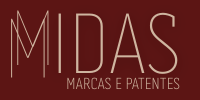Introduction
Patent registration is a crucial step for inventors and businesses seeking to protect their innovations in Brazil. The National Institute of Industrial Property (INPI – Instituto Nacional da Propriedade Industrial) is responsible for granting patents, ensuring exclusive rights over an invention for a specific period.
However, the patenting process involves multiple costs, including application fees, examination fees, annual maintenance fees, and potential legal expenses. Understanding these costs helps inventors and businesses plan financially before filing a patent. This article provides a detailed breakdown of the costs of patent registration in Brazil, covering all associated fees and key factors affecting the total expenses.
Why Register a Patent?
Before analyzing the costs, it is essential to understand why patent registration is a valuable investment:
- Exclusive Rights: Prevents others from manufacturing or selling the invention without permission.
- Monetization Opportunities: Allows inventors to license or sell their patents.
- Competitive Advantage: Protects against imitation by competitors.
- Encourages Innovation: Provides financial incentives for research and development.
Types of Patents in Brazil
INPI grants two types of patents:
- Invention Patent (PI – Patente de Invenção):
- Protects new inventions with industrial applications.
- Valid for 20 years from the filing date.
- Utility Model Patent (MU – Modelo de Utilidade):
- Protects functional improvements of existing objects.
- Valid for 15 years from the filing date.
Each type of patent has different requirements and costs, as outlined below.
Standard Costs of Patent Registration
The cost of obtaining a patent in Brazil varies based on applicant type, complexity of the invention, and additional procedures. The main fees include:
1. Initial Filing Fee
The first step in patent registration is submitting an application to INPI.
- Individual Inventors, Small Businesses (MEI, Micro, Small Companies), and Nonprofits:
- BRL 175.00 for invention patents (PI)
- BRL 155.00 for utility model patents (MU)
- Large Corporations:
- BRL 710.00 for invention patents (PI)
- BRL 630.00 for utility model patents (MU)
2. Patent Publication Fee
All patent applications are published in INPI’s Official Gazette (RPI) after 18 months from the filing date.
- BRL 355.00 (small businesses, individuals, MEI, nonprofits)
- BRL 1,415.00 (large corporations)
3. Request for Examination Fee
After publication, applicants must formally request an examination within 36 months to proceed with the evaluation.
- BRL 590.00 (small businesses, individuals, MEI, nonprofits)
- BRL 2,360.00 (large corporations)
4. Annual Maintenance Fees
To keep the patent active, annual fees must be paid starting from the third year after filing:
- Years 3 to 6:
- BRL 295.00 per year (small businesses, individuals, MEI, nonprofits)
- BRL 1,180.00 per year (large corporations)
- Years 7 to 10:
- BRL 590.00 per year (small businesses, individuals, MEI, nonprofits)
- BRL 2,360.00 per year (large corporations)
- Years 11 to 20:
- BRL 1,180.00 per year (small businesses, individuals, MEI, nonprofits)
- BRL 4,720.00 per year (large corporations)
Failure to pay annual fees results in patent expiration and loss of protection.
5. Patent Granting Fee
Once INPI approves the patent, the applicant must pay a final registration fee:
- BRL 298.00 (small businesses, individuals, MEI, nonprofits)
- BRL 745.00 (large corporations)
Additional Costs in Patent Registration
Aside from standard fees, applicants may encounter additional expenses:
1. Priority Claim Fee
If an applicant claims priority from a previous international patent application, an extra fee applies:
- BRL 295.00 (small businesses, individuals, MEI, nonprofits)
- BRL 1,180.00 (large corporations)
2. Amendments and Appeals
Applicants may need to file amendments or respond to INPI decisions:
- Filing an Amendment: BRL 175.00 – BRL 710.00
- Appeal Against Rejection:
- BRL 575.00 (small businesses, individuals, MEI, nonprofits)
- BRL 2,300.00 (large corporations)
3. Patent Monitoring Services
Monitoring patent databases helps inventors detect potential infringements.
- Estimated cost: BRL 1,000 – BRL 5,000 per year (offered by private firms)
4. Legal Assistance (Patent Attorneys)
Hiring an intellectual property attorney ensures compliance with technical and legal requirements.
- Estimated cost: BRL 5,000 – BRL 30,000 (depending on complexity)
Step-by-Step Guide to Registering a Patent with INPI
Step 1: Conduct a Prior Art Search
- Check INPI’s database to ensure the invention is new.
- Reduces the risk of rejection and wasted expenses.
Step 2: Prepare the Patent Application
- Include technical descriptions, claims, and drawings.
- Hire a patent attorney for complex applications.
Step 3: Submit the Application and Pay Fees
- File via INPI’s e-INPI system.
- Pay the applicable filing fee.
Step 4: Wait for Publication in the Official Gazette
- Published after 18 months.
- Allows third parties to file oppositions.
Step 5: Request Examination
- Must be done within 36 months after filing.
- Pay the examination fee.
Step 6: INPI Examination and Decision
- INPI evaluates novelty, inventive step, and industrial applicability.
- The process takes 7-10 years.
Step 7: Pay the Granting Fee and Maintain the Patent
- After approval, pay the registration fee.
- Continue paying annual maintenance fees.
Common Mistakes That Increase Costs
- Filing a Non-Patentable Invention: Leads to rejection and wasted fees.
- Skipping the Prior Art Search: Increases the risk of rejection.
- Delaying the Examination Request: May result in application abandonment.
- Missing Annual Maintenance Payments: Causes patent expiration.
Conclusion
The cost of registering a patent in Brazil depends on applicant type, annual maintenance fees, and additional services. While the total expenses can be significant, patent protection provides long-term financial and competitive benefits.
By understanding the patenting process and associated costs, inventors can make informed decisions to secure and maintain their intellectual property efficiently.

